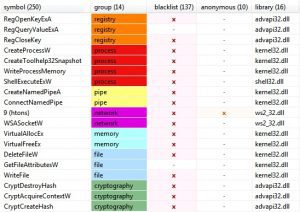

On the next post, we'll use IDA Pro to dig deeper into reversing the logic used by the malware. Therefore, this post will focus on the dynamic artifacts of running the malware and examining the files left behind. There are multiple levels of complexity to this sample, too much for a single post, including ways in which it encrypts embedded data and strings. I want to simply show a typical workflow of analyzing malware and overcoming the challenges that appear in doing so.

This is not a ground-breaking malware sample. Note: I cannot host the file here, but it can be obtained through VirusTotal (for those with privileges) or directly from Malwr with a free registered account. SSDEEP: 768:ofATWbDPImK/fJQTR5WSgRlo5naTKczgYtWc5bCQHg:uk6chnWESgRKcnWc5uF While this post won't be on the same malware, it's from a similar variant: Going back through prior incidents, I remembered a large scale response we worked involving a CoreFlood compromise. Most were overly complex, many overly simple, and most just too boring to write on. I've been meaning to write up a malware analysis post for awhile, but haven't really found any malware that's been really interesting enough. And, if the questions can't be answered, how to obtain good clues that could help you or another analyst understand the data down the road.Īdditionally. Some of the things I look for, some things I've learned to ignore, and how to go a little bit above and beyond to answer unusual questions. While every malware site under the sun can tell you how to do malware dynamic analysis, I wanted to write a post on how I, personally, perform dynamic analysis. One of the aspects of the lecture was showing off dynamic analysis with my Noriben script and some of the indicators I would look for when running malware. I had the honor of lecturing for Champlain College's graduate level Malware Analysis course this week.


 0 kommentar(er)
0 kommentar(er)
